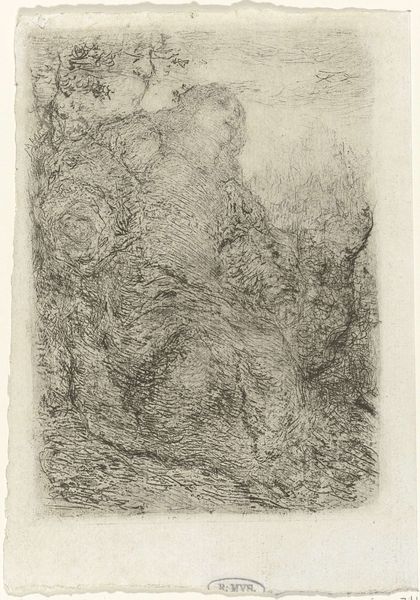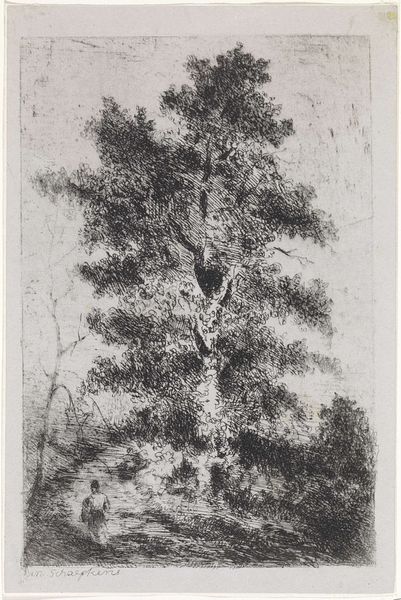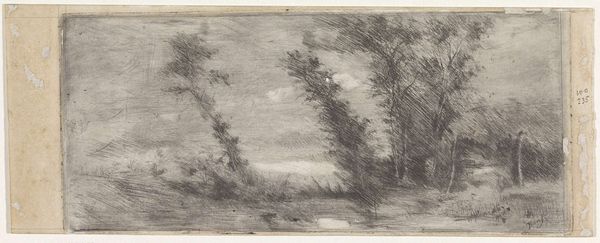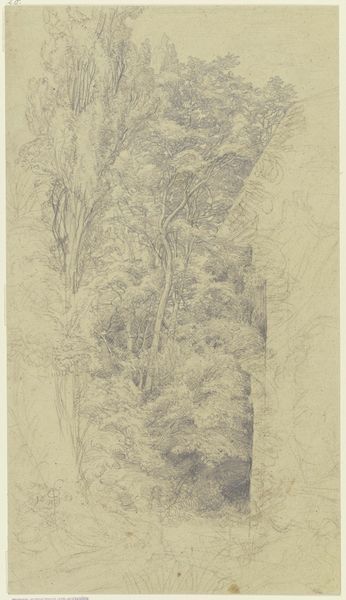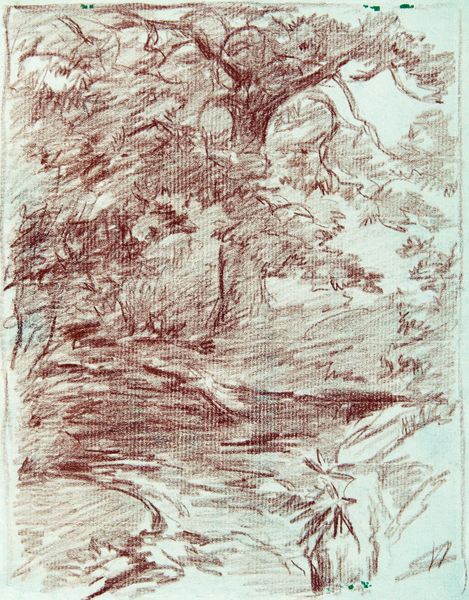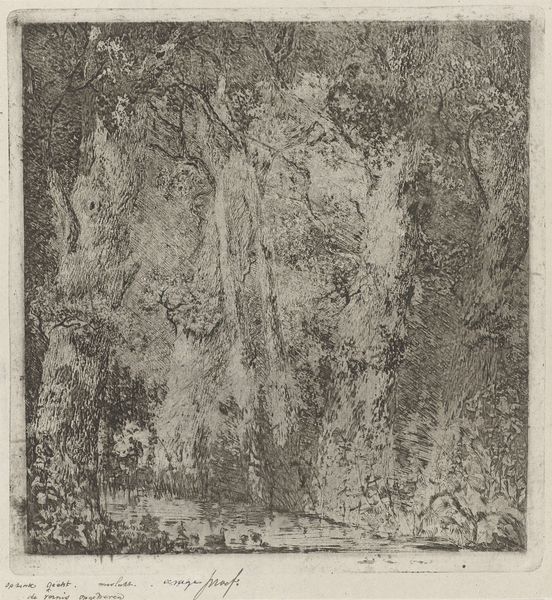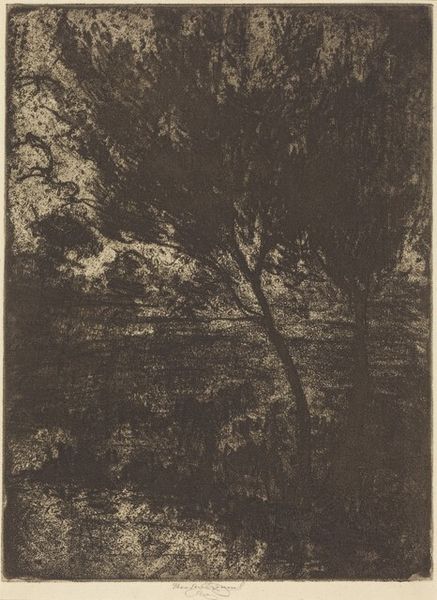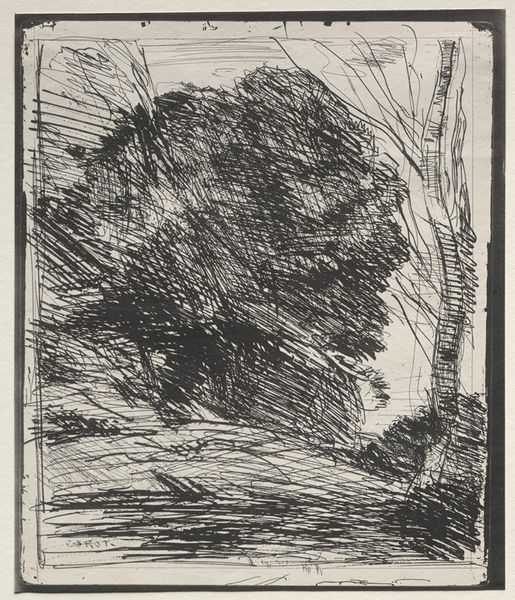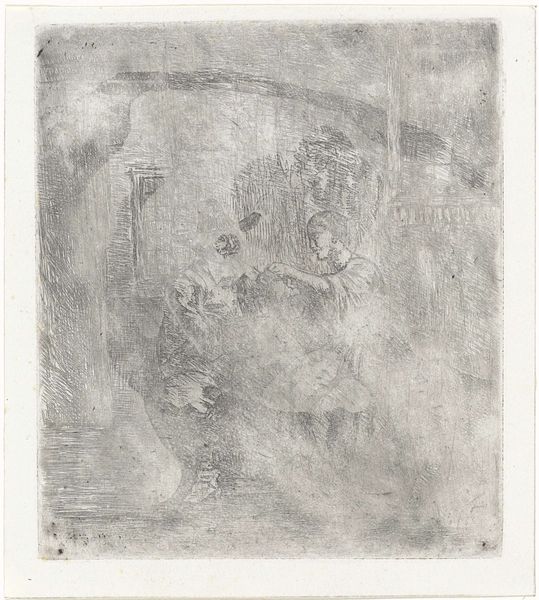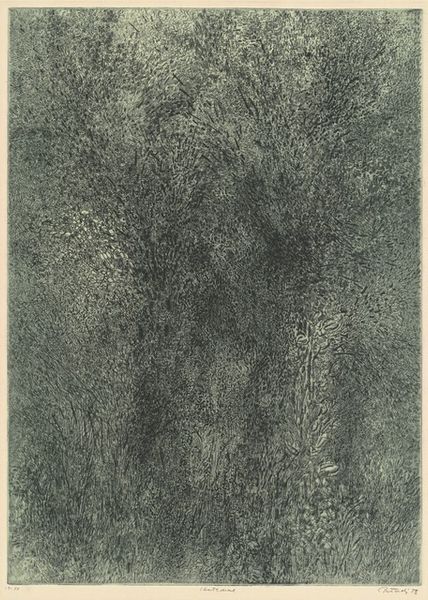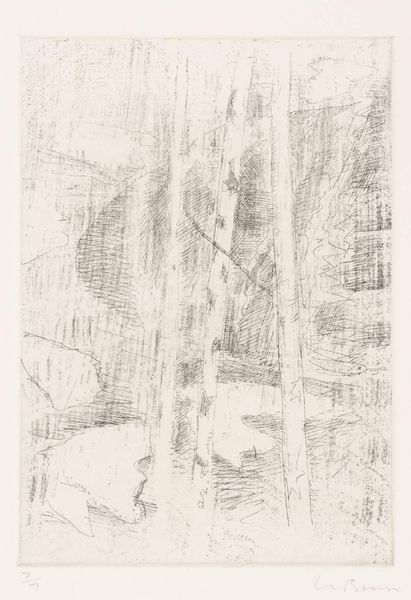
print, etching
# print
#
etching
#
landscape
#
line
#
realism
Dimensions: height 156 mm, width 102 mm
Copyright: Rijks Museum: Open Domain
Curator: Arnoud Schaepkens' etching, "Landschap met een koe bij het water," likely created between 1831 and 1904, immediately strikes me with its delicate lines. What are your first impressions? Editor: There’s a textural quality that's intriguing. You can almost feel the density of the foliage rendered with such intricate cross-hatching. It speaks volumes about the physical act of its creation, the labour involved. Curator: Absolutely. And within its creation, we also see commentary. Its rustic scene reminds me of similar movements throughout that period in Europe and the US where pastoral and farm scapes took center stage –often, as critiques of the rapidly industrializing society. A longing for something simpler. Editor: I see your point about that cultural context, that pastoral nostalgia, but my thoughts drift to the materials used in such prints from that era—the papers themselves, the etchants... How was the copper sourced? Who prepared the inks? Each element a part of the narrative, often forgotten. Curator: True, the political economy of art making is definitely part of the story. I see the subject—the lone cow—as a symbol of rural life in relationship with a broader landscape that includes those questions about labor and society at large. What stories does this cow carry for the viewer? Is it one of peace or economic precarity? Editor: Well, when you bring it into those narratives, I then ask how these pastoral depictions themselves became commodities. This artwork would’ve been circulated among specific social classes, embodying values around nature but still entangled with consumption and capital. Curator: Yes, these works were objects embedded in complicated social exchanges. By examining the intersecting themes of the artwork we understand not only how it was made but how social and economic realities shaped both production and interpretation. Editor: Right. And by grounding ourselves in those very material, economic conditions that brought "Landschap met een koe bij het water" into being, we gain a greater appreciation of how historical context shapes aesthetic taste and cultural memory. Curator: It provides insight into the power dynamics that have shaped our perceptions of art itself. Thank you. Editor: Indeed. It helps reveal hidden social structures. A revealing experience, thanks.
Comments
No comments
Be the first to comment and join the conversation on the ultimate creative platform.

